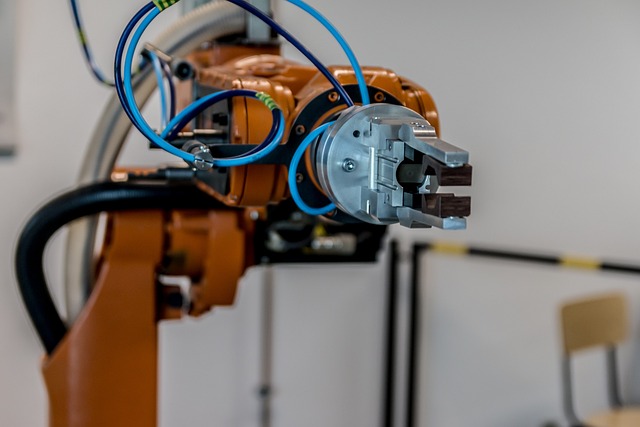Sports car cold air intake (CAI) systems enhance track performance by drawing in cooler, denser outside air for improved combustion efficiency and increased power/torque. These systems overcome extreme track conditions, ensure optimal fuel-air mixture, reduce restrictions, and improve throttle response. Crafted from lightweight materials like aluminum or carbon fiber, they are built to withstand track use while maintaining peak efficiency. Track-tuned intakes offer significant advantages, including advanced filtration for clean air delivery and improved fuel economy, making them popular choices for speed-seeking sports car enthusiasts. When selecting a CAI, prioritize airflow capacity (CFM), fitment, material quality, and noise level for optimal engine efficiency tailored to specific vehicle requirements.
Unleash your sports car’s true potential with performance-tuned sports intakes. This article delves into the essentials of understanding cold air intake systems and their vital role in enhancing engine power on the track. Discover how track-tuned intakes optimize airflow, boosting speed and responsiveness. Learn expert tips for selecting the ideal cold air intake tailored to your vehicle’s needs, ensuring a seamless blend of style and performance.
- Understanding Sports Car Cold Air Intake Systems: The Basics
- Performance Benefits of Track-Tuned Intakes
- Choosing the Right Cold Air Intake for Your Sports Car
Understanding Sports Car Cold Air Intake Systems: The Basics

Sports car cold air intake systems are designed to enhance performance on the track by optimizing airflow to the engine. At its core, a cold air intake system draws in cooler, denser air from outside the vehicle, typically from the side or front, rather than relying on warm air from the cabin or engine compartment. This difference in temperature can significantly impact combustion, as cool air is more efficient at extracting oxygen and delivering it to the engine, leading to improved power and torque.
On the track, where conditions are often extreme and precise control over engine performance is crucial, cold air intake systems offer several advantages. They help maintain a consistent air supply, ensuring optimal fuel-air mixture under varying speeds and load conditions. Additionally, they can reduce restrictions in the airflow path, allowing for better breathing of the engine and improved throttle response. These systems are often crafted from lightweight materials like aluminum or carbon fiber to withstand the rigors of track use while maintaining their efficiency.
Performance Benefits of Track-Tuned Intakes

Performance tuned sports intakes, particularly those designed for track-ready vehicles, offer a myriad of advantages for drivers seeking to enhance their driving experience. These cold air intake systems are meticulously engineered to optimize airflow, delivering a significant boost in power and torque. By drawing in cooler, denser air from outside the engine compartment, track-tuned intakes ensure that each cylinder receives the ideal mix of fuel and oxygen, leading to more efficient combustion. This results in improved horsepower and torque figures, translating to better acceleration and top speeds—features that are especially valuable on a race track.
Furthermore, these intakes often incorporate advanced filtration technology, allowing for increased air flow while maintaining optimal engine protection. High-flow filters capture and retain contaminants, ensuring clean air reaches the engine, which can lead to improved fuel economy and reduced wear over time. For sports car enthusiasts, combining superior performance with efficient filtration makes track-tuned intakes a popular choice for those who demand both speed and reliability in their vehicles.
Choosing the Right Cold Air Intake for Your Sports Car

When enhancing a sports car for performance, selecting the optimal cold air intake system is a crucial decision. These systems are designed to improve engine efficiency by delivering cooler and denser air from the outside environment into the engine’s combustion chamber. For track-focused vehicles, where every horsepower matters, choosing a high-flow cold air intake (CAI) can make a significant difference in power output and responsiveness. Look for intakes that offer excellent airflow capabilities, typically measured in cubic feet per minute (CFM), to ensure your sports car gets the maximum flow of fresh air.
Consider factors like fitment, material quality, and noise level when making your choice. High-performance sports car cold air intake systems are available in various designs, from direct-fit replacements to more complex, custom setups. Assess your vehicle’s specific requirements, such as engine type and bay space constraints, to guarantee a perfect fit. Additionally, check the construction materials; oiled or dry filter media, aluminum or plastic housing—each option has its advantages in terms of durability and performance gains.
Upgrading your sports car with a track-tuned cold air intake system can significantly enhance its performance, offering improved engine power and response. By understanding the basics of these systems and choosing the right fit for your vehicle, you can unlock the full potential of your sports car on the track. Investing in a high-quality, performance-optimized intake is a key step towards achieving an efficient and exhilarating driving experience.














